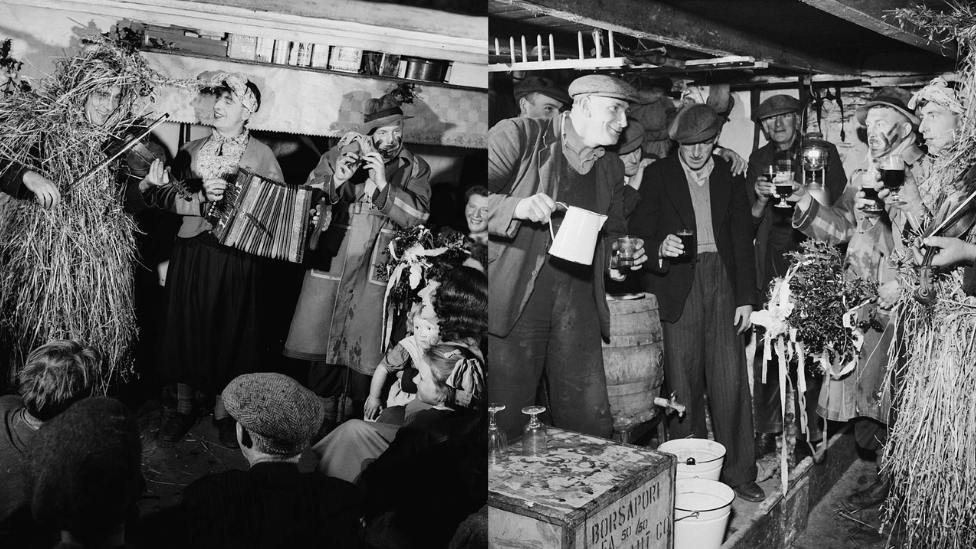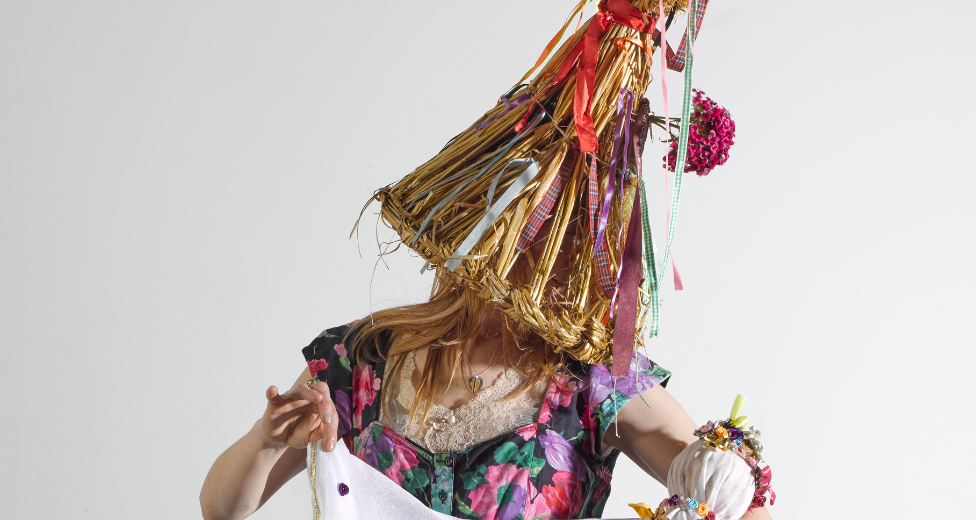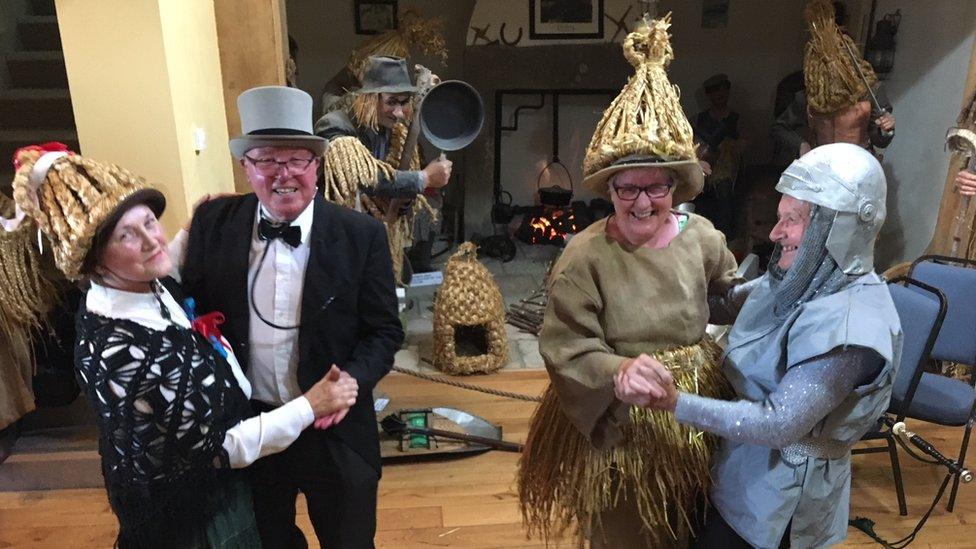Mumming: The Boxing Day hunt, but not as you know it
- Published

Mumming is an ancient, Christmas-time tradition involving costume, theatre and song
It is the Boxing Day hunt, but not as you know it.
26 December marks Wren Day, or Lá an Dreoilín, a historic ritual that sees disguised individuals sacrifice a bird, attach it to a holly branch and travel door-to-door, asking for money.
Those that refused the wrenboys were often threatened with having the bird buried on their doorstep.
The practice is associated with rhyming, or mumming, - a Christmas-time, house-visiting tradition involving costume, theatre and song.
Masked entertainment has been a part of Irish customs for hundreds of years.
Thomas Croker's manuscript, Recollections of Cork, makes reference to a mummers' play being performed in Cork, the Republic of Ireland, in 1685.
"What makes this reference of specific interest is that it is the single oldest reference to a Mumming Play not only in Ireland but anywhere," said Shane Lehane from University College Cork's Department of Folklore and Ethnology.
Although popular, it was not always approved of.
The Catholic Church notably condemned mumming during the early 20th Century.

The practice of mumming stretches back thousands of years
The mummers' play plot remains constant - a combat fight between a hero and a villain - identified by their rhymes, concluding in death, resurrection and reconciliation.
"It's a midwinter fertility rite, marked by the death of the hero and the revival, in the depths of midwinter there is hope, the sun will come back in the spring," explained Jim Ledwith from the Mummers Foundation in County Fermanagh.
Shane Lehane from UCC explains that each year the play's plot and characters can change according to the zeitgeist, but the themes of death and new life remain.
"All Irish folk custom and ritual is informed by the continuous repeating cycle of the seasons with its periods of barrenness in the Winter characterised by the feast of Samhain at Halloween and the new life and energy with the coming of the light and warmth at Springtime personified by Brigid and her feast day of Imbolc: the time of rebirth," he said.
"It is interesting that the mumming plays most often take place at the midpoint - the solstice and Christmastime - when we move from one state to the other."
The dead bird on a stick
The wren is the UK's most common breeding bird, noted for its loud voice and singing throughout winter.
It is also referred to as the king of birds in some traditional songs sung by mummers.
Originally, groups of boys would hunt for a wren which was then tied to the top of a pole or holly bush, decorated with ribbons or coloured paper, and carried house to house by the boys, who wore straw masks and old clothes.

St Stephen's Day: Three wren boys in road, Athea, County Limerick, 1947
Similar traditions are celebrated across the British Isles, most notably on the Isle of Man.
"The wrenboys are a different sort of tradition, they only go out on St Stephen's Day to perform song and music, these are one-day wonders," Jim explained.
"They gather the money and then they have a dance.
"Everybody who had given freely got invited, it was normally held in a house or a barn and they'd be drinking until all hours.
"If there was enough sandwiches made by the women, and enough drink, it would carry on to a second night.
"It was a communal celebration of life itself by going out performing, gathering the money in, inviting the people in.
"They would drink the bit out, away off home and we're now looking forward to January and spring will be around the corner."

Festivities could stretch over several days as rural communities celebrated the death of winter
Jim said the tradition built out of necessity, firstly to pass the time, then to respond to the community's charitable demands - obscure dress, disguised voice and gesture adding to the mystery and pantomime.
These days traditional, rural mumming is in decline with just one group, based in Ederney, performing across County Fermanagh this year.
"I organised mumming festivals in the early 90s when there was 10 or 12 groups," Jim said.
"They all have died away, tradition has fallen a good bit and that's where the good work of the Armagh Rhymers gives it a profile."

Professional performance group The Armagh Rhymers are preserving the mumming traditions
The Armagh Rhymers were formed during the 1970s and are one of Ireland's most celebrated folk music and theatre ensembles.
Preserving the traditions of mumming and rhyming, the group is comprised of professional performers with an emphasis on education.
"A lot of our work is in schools and the faces of children when they see the masks and costumes is very special, often there is a spark of fear which quickly turns to delight," programme manager Clare Jennings said.

Flax, willow, ribbon and straw are used to create intricate costumes
"We recently saw a thread on Twitter where people shared the scary things that stick in their memories from their childhood and The Armagh Rhymers were up there with Oliver Plunkett's head which is high esteem indeed!"
The masks worn by The Armagh Rhymers are made from flax, willow, and straw.
"We are seeing a big renaissance in interest in the tradition with many younger people seeking out unique authentic experiences.
"Audiences are enthralled by the otherworldly and strange nature of the performances, it's almost as if the masks and costumes give people freedom to dance, sing and get involved, even the most reluctant child joins in which is wonderful to see," she added.
There is still a strong tradition of rhyming or mumming throughout Ireland - also known as Strawboys, Wren boys, Biddymen and Mayboys - which has continued to the present day with each community having their own individual practices and interpretations of English, Balkan and Celtic traditions.
Related topics
- Published22 September 2018

- Published26 December 2021
